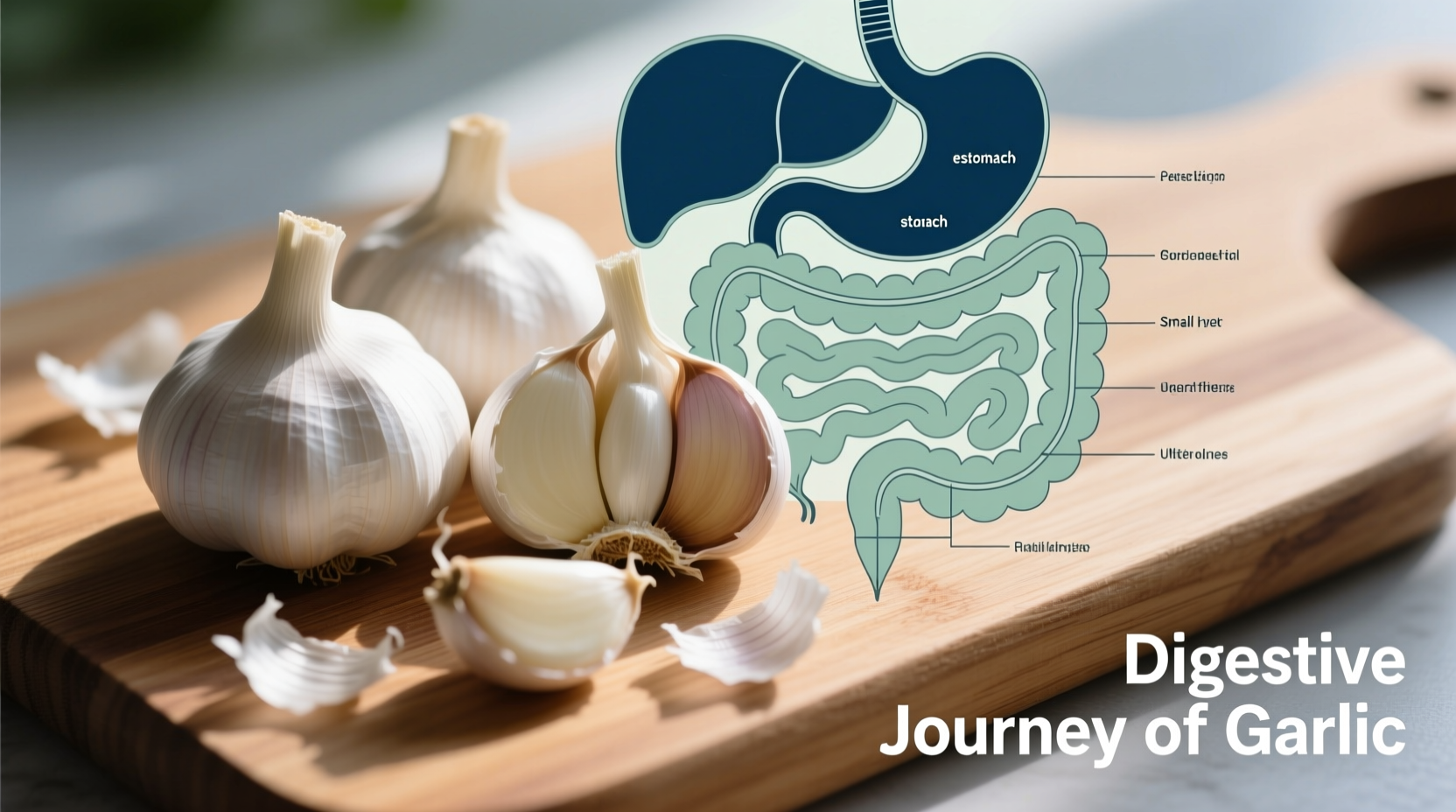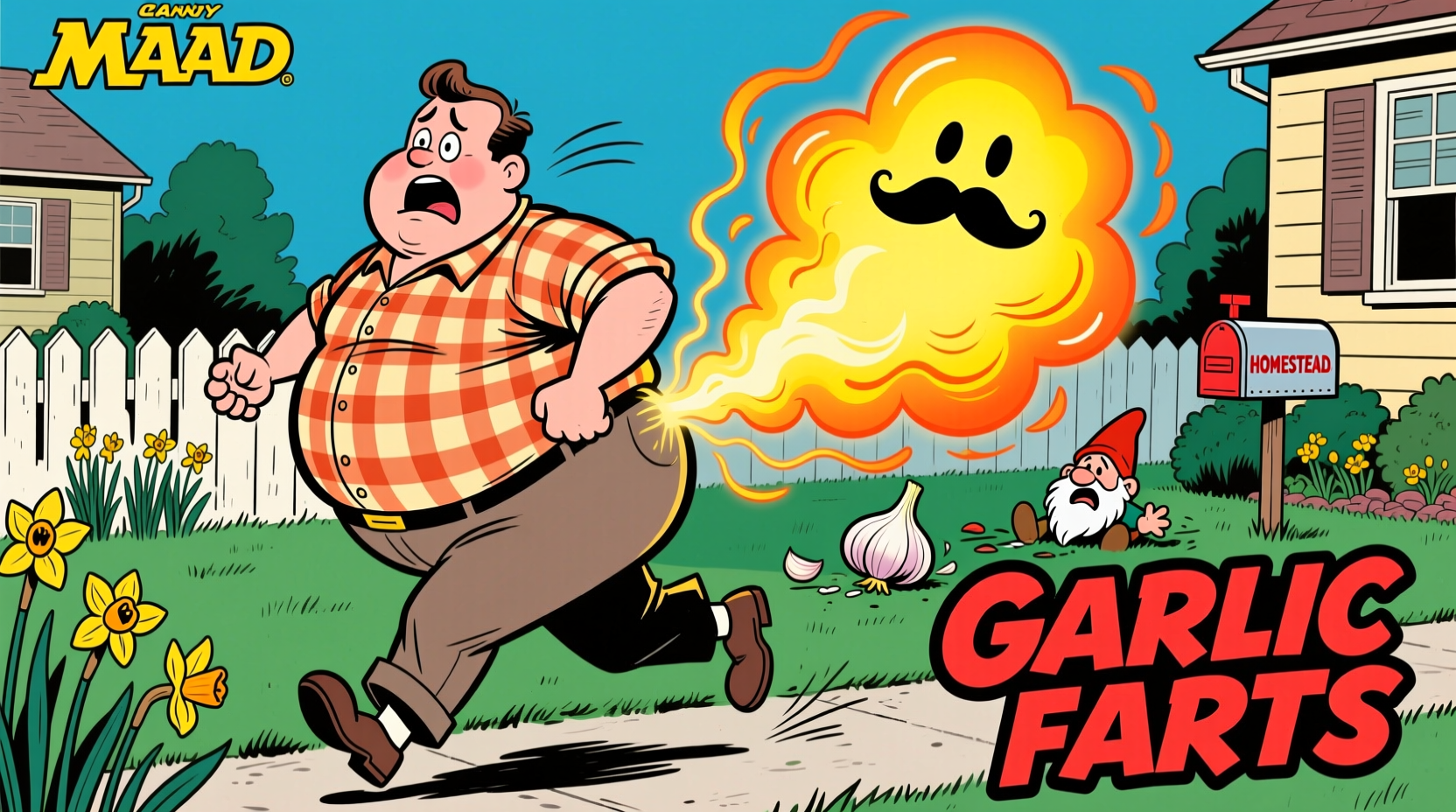Eating garlic causes gas because it contains fructans, a type of FODMAP that gut bacteria ferment in your large intestine, producing hydrogen sulfide gas with that distinctive odor. This typically lasts 12-48 hours depending on your gut microbiome and garlic consumption amount. You can reduce effects by cooking garlic thoroughly, consuming smaller portions gradually, or pairing with digestive-friendly foods.
Garlic's reputation as a culinary powerhouse comes with an unavoidable side effect many experience but rarely discuss: increased flatulence with a characteristic sulfur smell. If you've ever wondered why your favorite garlic-heavy meal leads to uncomfortable gas later, you're not alone. This article explains the precise biochemical process behind garlic-induced flatulence, how long these effects typically last, and science-backed strategies to enjoy garlic without the embarrassing aftermath.
The Biochemical Reason Behind Garlic Farts
Garlic contains significant amounts of fructans, a type of carbohydrate classified as FODMAPs (Fermentable Oligosaccharides, Disaccharides, Monosaccharides, and Polyols). Unlike other carbohydrates, fructans aren't fully digested in your small intestine. Instead, they travel to your large intestine where your gut bacteria ferment them as an energy source.
During this fermentation process, bacteria produce gases including hydrogen, carbon dioxide, and crucially, hydrogen sulfide—the compound responsible for that distinctive 'rotten egg' smell associated with garlic farts. According to research published in the Journal of Nutrition and Metabolism, the sulfur compounds in garlic (particularly allicin and its breakdown products) directly contribute to the pungent odor of resulting gas.
| Garlic Compound | Role in Gas Production | Odor Contribution |
|---|---|---|
| Fructans | Primary food source for gut bacteria fermentation | Moderate |
| Allicin | Breaks down into sulfur compounds during digestion | High (distinctive odor) |
| Diallyl sulfide | Metabolized into hydrogen sulfide | Very high |
How Long Garlic Gas Typically Lasts
The duration of garlic-induced flatulence depends on several factors including your individual gut microbiome composition, the amount consumed, and your digestive efficiency. For most people, noticeable effects begin 4-8 hours after consumption and typically subside within 12-48 hours.
A 2022 study from the National Institute of Diabetes and Digestive and Kidney Diseases tracked participants' digestive responses to high-FODMAP foods including garlic. Researchers found that 78% of participants experienced peak gas production 10-14 hours after consumption, with symptoms resolving within 24 hours for those with healthy digestive systems. Individuals with irritable bowel syndrome (IBS) or other digestive sensitivities may experience prolonged effects up to 72 hours.

Practical Strategies to Reduce Garlic Gas
Cooking Methods That Minimize Gas Production
Raw garlic contains the highest concentration of gas-producing compounds. Cooking transforms these compounds through chemical reactions:
- Roasting: Breaks down fructans and converts sulfur compounds into less volatile forms
- Boiling: Leaches some fructans into cooking water (discard water after cooking)
- Longer cooking times: 20+ minutes significantly reduces gas-producing potential
According to culinary research from the Culinary Institute of America, roasting garlic at 375°F for 25 minutes reduces its fructan content by approximately 35% compared to raw garlic.
Building Tolerance Gradually
Your gut microbiome can adapt to increased garlic consumption over time. Start with small amounts (1-2 cloves daily) and gradually increase over 2-3 weeks. This allows your gut bacteria to adjust their metabolic processes, potentially reducing gas production.
Strategic Food Pairing
Certain foods can help counteract garlic's gas-producing effects:
- Combine with ginger, which has natural carminative properties
- Add digestive enzymes like bromelain (found in pineapple)
- Pair with probiotic-rich foods like yogurt to balance gut bacteria
When Garlic Gas Might Signal a Health Concern
While garlic-induced gas is normal for most people, certain symptoms warrant medical attention:
- Severe abdominal pain lasting more than 48 hours
- Blood in stool
- Unintentional weight loss
- Symptoms persisting beyond 72 hours after garlic consumption
These could indicate underlying conditions such as small intestinal bacterial overgrowth (SIBO), inflammatory bowel disease, or food intolerances beyond typical garlic sensitivity. The Mayo Clinic recommends consulting a healthcare provider if digestive symptoms significantly impact your daily life or don't resolve within a reasonable timeframe.
Common Misconceptions About Garlic and Digestion
Myth: "Cooking garlic completely eliminates its gas-producing properties"
Reality: While cooking reduces gas production, it doesn't eliminate it entirely. Some fructans and sulfur compounds remain even after thorough cooking.
Myth: "Only people with IBS experience garlic-related gas"
Reality: Even individuals with healthy digestive systems experience increased flatulence after consuming garlic—it's a normal physiological response to certain compounds.
Myth: "Garlic is bad for your digestion"
Reality: Garlic actually supports gut health by acting as a prebiotic that feeds beneficial bacteria. The gas production is a temporary side effect of this beneficial process.
Managing Garlic Consumption for Optimal Enjoyment
Garlic offers numerous health benefits including cardiovascular support and immune system enhancement. Rather than eliminating it from your diet, implement these practical strategies:
- Start with smaller portions (1 clove) and gradually increase
- Choose roasted or cooked garlic over raw when possible
- Consume garlic with meals rather than on an empty stomach
- Stay hydrated to help move food through your digestive system
- Consider taking digestive enzymes before garlic-heavy meals
Remember that individual responses vary significantly based on your unique gut microbiome composition. What causes significant gas for one person might have minimal effects for another. Pay attention to your body's signals and adjust your consumption accordingly.
How soon after eating garlic do you experience gas?
Most people experience increased flatulence 4-8 hours after consuming garlic, with peak effects occurring around 10-14 hours post-consumption. This timing aligns with when undigested garlic compounds reach the large intestine for bacterial fermentation.
Does roasted garlic still cause gas?
Roasted garlic produces less gas than raw garlic but can still cause flatulence. The roasting process breaks down some fructans and converts sulfur compounds into less volatile forms, reducing but not eliminating gas production. Most people experience milder effects with roasted versus raw garlic.
Can you build tolerance to garlic-induced gas?
Yes, many people can build tolerance by gradually increasing garlic consumption over 2-3 weeks. Starting with small amounts (1 clove daily) and slowly increasing allows your gut microbiome to adapt, potentially reducing gas production while still enjoying garlic's health benefits.
Why do garlic farts smell different than regular flatulence?
Garlic contains sulfur compounds like allicin that break down into hydrogen sulfide during digestion. This compound produces the distinctive 'rotten egg' smell that makes garlic farts noticeably more pungent than regular flatulence, which primarily contains odorless gases like nitrogen and carbon dioxide.
Are garlic farts a sign of good gut health?
Paradoxically, yes. The gas production indicates that beneficial gut bacteria are actively fermenting garlic's prebiotic compounds. This process supports a healthy microbiome, though the temporary discomfort is an unavoidable side effect of this beneficial activity.











 浙公网安备
33010002000092号
浙公网安备
33010002000092号 浙B2-20120091-4
浙B2-20120091-4